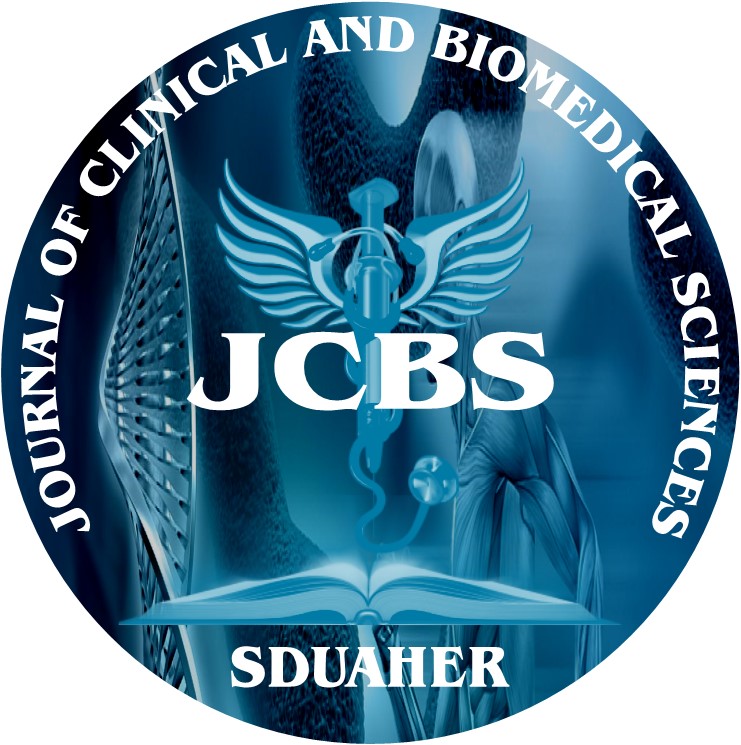


Journal of Clinical and Biomedical Sciences
Year: 2014, Volume: 4, Issue: 3, Pages: 333-334
Review Article
Dr. Shamsuz Zaman *, Dr. Rahul Chaurasia, Dr. Kabita Chatterjee
Dept. of Transfusion Medicine, All India Institute of Medical Sciences, New Delhi, India
*Corresponding Author
Email ID: [email protected]
Background: Bombay blood group is the most frequently asked rare blood in India. It is characterised by absence of normal ABH antigens and have corresponding antibodies in serum. This blood group is suspected when reagent O cells show agglutination in reverse or back typing or during antibody screening. We present a case of Bombay phenotype which was initially mistyped as O group. Methods: Patient was having Iron deficiency anaemia and presented to our centre with signs and symptoms of anaemia. Two units of packed red cells were requested by physician. On routine typing strong reaction with O cells in reverse grouping and pan-reactive picture on antibody screen, which led to the suspicion of Oh phenotype. Results/conclusions: We report a case of Bombay blood group referred to our centre which was managed successfully by contacting voluntary donor though rare donor registry. We highlight the importance of following standard protocol for proper pretransfusion testing including blood grouping and also close coordination among blood banks across the country.“Bombay phenotype" (h/h, also known as Oh) is a rare blood group found in 1 of 7,600 individuals in India and 1 in a million people in Europe (1, 2). Oh phenotype lacks all ABH antigens and possesses naturally occurring antibodies to A, B and H antigens. During ABO typing, these individuals type as group O. The Oh phenotype becomes apparent during antibody detection tests or during reverse typing which includes testing with reagent “O” reagent red cells. The anti-H present in Oh individuals strongly agglutinates allgroup “O” red cells (rich in H antigens). The Oh phenotype is confirmed by demonstrating absence of H antigen on red cells and presence of anti–H in the serum. Anti-H present in these individuals is predominantly of IgM type that can bind complement and cause immediate RBC lysis. If a laboratory misinterprets this rarely encountered blood group which looks like O blood group on simple grouping and issues “O” blood to these patients, acute haemolytic transfusion reaction is inevitable. A 22 year female, known case of Iron deficiency anaemia (IDA) was referred to our centre with complaints of increasing weakness, easy fatigability and difficulty in breathing. On examination, patient had marked pallor, tachycardia and was dyspnoeic. Her ECG was normal. CBC showed Hb-2.8 g/dl, HCT-14% and Reticulocyte count 12%. Iron studies were consistent with diagnosis of IDA (S.Iron 20 μg/ml, S. ferritin 3.61ng/ml, TIBC 496 μg/dl). Peripheral blood smear showed microcytosis and polychromasia. Osmotic fragility and G6PD tests were normal. Blood group was O Rh (D) positive.On enquiry patient revealed history of transfusion attempt thrice in a local hospital, each time resulting in immediate stopping of transfusion due to transfusion reaction and was thus referred to our centre. In view of her clinical status, 2 units of RBC were requested. On routine typing technician observed strong reaction with O cells in reverse grouping and pan-reactive picture on antibody screen, which led to the suspicion of Oh phenotype. On further immunohematological workup with extended panel it was found to be a case of Oh (Table 1). Since our inventory was not having Bombay blood group we asked the relatives of the patients to get their blood group checked. Her younger sister was found to be Oh phenotype but was not eligible for donation (weight-42kg and Hb-10.8g/dl).
Subscribe now for latest articles and news.